A chance visit by a friend into our ‘fragrant harbour’ (literal translation of Hong Kong), gave Abhimanyu Narayanmoorthy an excuse to pack his bags again for exploring some of the many, many islands of Philippines.
Comprising of 7641 islands, the Philippines provides a quick getaway for a very cost effective vacation to most travellers looking to explore the region. The arrival of Ferdinand Magellan in 1521 and thereafter of Lopez de Legazpi bought the island under Spanish influence for 300 years. First stop in Philippines is Manila which has plenty of flights from Hong Kong, every day. After a night’s stay in Manila, our exploration commenced.

We took off the next morning for Coron. Forty-five minutes in to the flight, we were welcomed with the sight of white sands and turquoise blue water. As soon as we got off the flight, we were welcomed by a crisp sunlight and abundant fresh, unpolluted air that I was longing for. Without wasting any time, we began hiking up Mt. Tapyas. The 1000 step hike provided a 360-degree view of the islands and a spectacular sunset point.
We concluded the day by visiting the Maquinit Hot Spring in the evening. After a moderate hike, the hot spring provided the much-needed relaxation. Preferably go a bit later in the evening so as to avoid the crowd.

The next morning, we began exploring the various islands of Coron. A short boat ride from Coron town took us to the Kayangan Lake which is considered to be one of the clearest lakes in Asia. A short hike to a famous hill top near Lake Kayagan provides for the most insta-worthy view of the Philippines. One site that is not to be missed is Barracuda Lake nearby, which has hot springs and underwater mountains.
We concluded by visiting the Twin Lagoon that are hidden away amongst the staggering jagged cliffs separate the two lagoons and protect them from the currents and tides making water clear andcalm. The only way to travel between the two lagoons is to jump in the water and climb a rickety wooden staircase or swim around the natural archway formed in the rock. As the fresh underground water meets the warm sea, one can experience a totally different sensation. Our day was topped up with a sumptuous dinner at the Kawayanan Grill Station.
The second day of island hopping began with the tour of Malcapuya Island, one of few idyllic islands near Coron. Being sparsely populated it provides tourists with a tropical paradise. Ultimate destination for those looking for soft sand beaches, clear warm waters all with a secluded appeal. It is totally untouched by developments with only a few families inhabiting there. Long stretches of soft white sand, shimmering turquoise waters make this a ‘must visit’. Next stop was the Banana Island where we stopped for lunch. It’s idyllic beaches provide a perfect stop for a post lunch siesta.

One of the most popular islands in the Philippines is the island of Boracay. Situated 300 km south of Manila one of the most popular islands flooded with tourists from across the world. It is a 7 km long stretch which is divided in to 3 stations. One can reach the island after a quick ferry ride from the Caticlan Airport. After a late lunch and resting at our hotel we headed to the famous White Sand Beach. I chose to spend the evening by enrolling myself into paddle boarding lessons which are priced moderately. Boracay offers great dining options and a vibrant night life going into the wee hours of the morning.

The next day we began with our first stop at Puka Beach. It’s a quiet retreat with a dense tropical forest bordering its white sand and pristine waters. The stretch of sand runs for about 2,620 feet (800 meters), making it one of the longest on the island. Examine the tiny Puka shells, which give the beach its name.

Enter via the wooden portal welcoming you to the beach. Enjoy the tranquil ambiance, which offers a stark contrast to busy White Beach. The sand is a little rough here, resulting in fewer crowds and vendors. Listen to the sound of the gentle waves as you relax on the sand and soak in the sun. Stay for sunset and watch the sky darken above this secluded beach. One cannot leave Boracay without experiencing the exciting cliff jump at Ariel’s Point at the Magic Island. We concluded the day by indulging in water sports at the White Sand Beach.
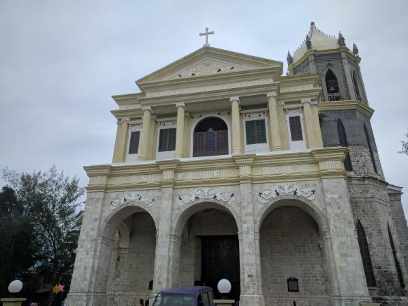
The next day we proceeded to Dumaguete, the capital city in the province of Negros Oriental. It is also referred to as University City due to the presence of many universities in the region. We arrived at Sibulan Airport and proceeded to check in to our hotel. We began our exploration of Dumaguete by visiting the Cathedral Church built during 1754- 1776. Truly exquisite piece of architecture, this place is not to be missed.

We also visited Silliman University, in particular, the Anthropology Museum. The bulk of the artefacts displayed came from field works and excavations. The items included a few tools and ornaments. One should not miss a quality stroll of Rizal Boulevard. It is one of the signs of Spain’s colonial history in Philippines. The Boulevard is spread with many restaurants, 50 kms to the north of Dumagute.
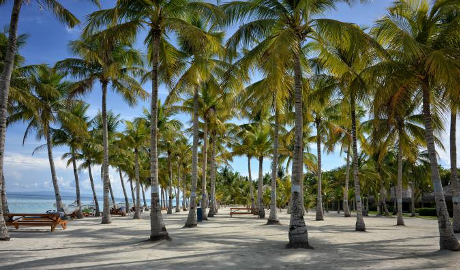
After a glorious outing in Dumagute we went to our penultimate destination – Bohol. The morning ferry ride took around two hours and we alighted at the port of Tagbilaran. This province is a popular tourist destination with many resorts and beaches. The main island is surrounded by around seventy smaller ones with Dingalanbeing the biggest. Post lunch we hired scooters and headed to the Alana Beach to spend the rest of the day. The sunset is absolutely glorious and not to be missed.
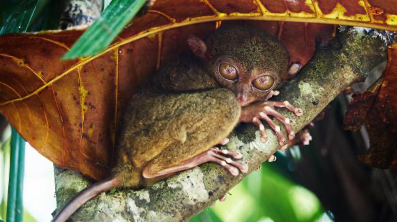
Two-wheeler enthusiasts should make most of their time by exploring the area on safe roads of the islands. Bohol truly has a variety of natural sites to visit. Our first step was to visit the Tarsier Foundation. The Tarsier is a nocturnal primate measuring about six inches in height. It is mainly found in the South of Philippines.
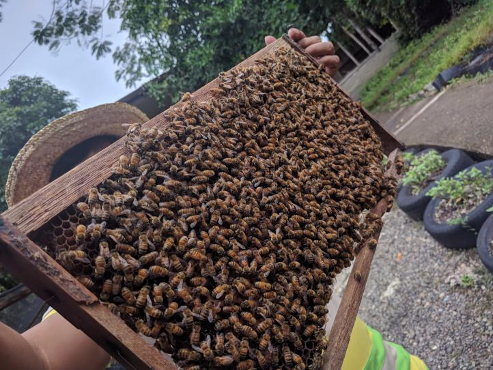
Next was the Bohol Bee Farm that arranges a tour for you of their various facilities. Being an organic bee farm, the effort is to minimise use of insecticides. Holding the hive of bees could be intimidating but was definitely worth it. Post lunch at the bee farm, we visited the Hinagdanan cave, which is a naturally lit cavern with a deep lagoon. The cave is of limestone. It is filled with sleeping birds.
The last stop of the day before heading to the Alana Beachwas the Blood Compact Site namely Sandugo. This is where Miguel Lopez de Legazpi and Datu Sikatuna the Chieftain Of Bohol got together to seal their friendship in blood.

One cannot complete a trip of Bohol without visiting the Chocolate Hills. There are around 1260 hills spread across 50 sq kms.Three legends explain the formation of the Chocolate Hills. The first tells the story of two feuding giants who hurled rocks, boulders, and sand at each other. The fight lasted for days, and exhausted the two giants. In their exhaustion, they forgot about their feud and became friends, but when they left they forgot to clean up the mess they had made during their battle, hence the Chocolate Hills.
After the hills we got on board a floating restaurant and enjoyed the Loboc River Cruise with buffet meal. This river is one of the cleanest rivers in the country. This is the one tourist spot you don’t want to miss during your Bohol Tours.
The Bamboo Hanging Bridge crossing the Sipatan River in the Municipality of Sevilla, Bohol, is a fun tourist attraction. Originally constructed using just bamboo and rope, today the rope has made way to steel cables, giving added safety and stability. The deck of the bridge is formed out of woven bamboo slats. In places some of these appear broken but its still sturdy enough to take the weight of tourists, locals and even small motorcycles!
Stepping onto the bridge is a little daunting at first with the bamboo deck flexing a little under your feet. Although the support cables are made of steel, you still experience some side to side sway and up and down bounce. If there are lots of people on the bridge and you have young children with you, wait before crossing. The movement of the bridge might make you feel a little uneasy, as it will bend and sway more than normal. I guess its all part of the experience.
The bridge spans around 40 meters and offers a great view of the emerald Sipatan River below.
On the far side of the bridge you will find small shops selling souvenirs, cold drinks and snacks. Additionally you can see ’The Buko King’– the world’s fastest coconut husker. He can strip a coconut (buko) in something like 10 seconds using just his teeth!
There are actually two bridges now, so foot traffic is reduced somewhat with I believe a one-way system in place, you cross on one bridge and come back on the other.
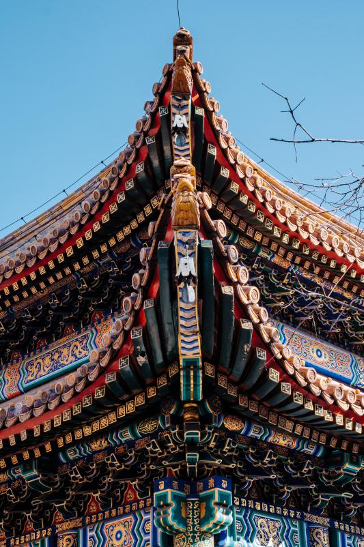
The last stop on the trip before our flight to Manila was Cebu. We reached Cebu by a ferry from Tagbilaran in the morning. Our first spot was the Cebu Taoist Temple located in Beverly Hills Subdivision of the city. The temple is a towering, multi-tiered, multi-hued attraction accessible by three separate winding routes.
A ritual among devotees is where one prays to the gods to grant one’s wish. The ritual includes washing of hands, going inside the chapel barefoot and dropping two blocks of wood. If the blocks of wood are both face up then one could make a wish. If not, then it is not yet the time for one’s wish to be granted and one has to come to the temple some other time.
The next site was the Magellan’s Cross. It is a Christian cross planted by Portuguese and Spanish explorers as ordered by Ferdinand Magellan upon arriving in Cebu. Prior to having lunch, we visited the Lapu-Lapu shrine, a 20-metres bronze statue erected in honor of Lapu-Lapu, a native leader who defeated Spanish soldiers in the Battle of Mactan.
From Cebu we went back to Manila before returning back to HK. It is safe to assume that even month is not sufficient to visit all the islands that Philippines has to offer. As I boarded the flight to return home the one image that got stuck in my mind was that of the turquoise blue water and the crisp white sand. This was my second trip to the island and I can certainly say that it would not be my last.
Travel Tips:
- Make sure to carry loads of sunscreen as there is constant exposure throughout the day
- make the most of the natural beauty Philippines has to offer to rejuvenate yourself
- if you’re not a regular swimmer, it would be nice to take a refresher swim course as a lot of the time is spent in the water
- food can be a bit of an issue, for vegetarians especially, if visiting remote island
- most airports in Philippines offers competitive exchange rates for USD
- as these islands get continually bombarded by typhoon it would be advisable to get a travel insurance in case of emergencies.
As published in A-DesiFlava – Jan-Feb 2020 issue





